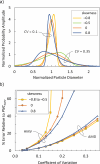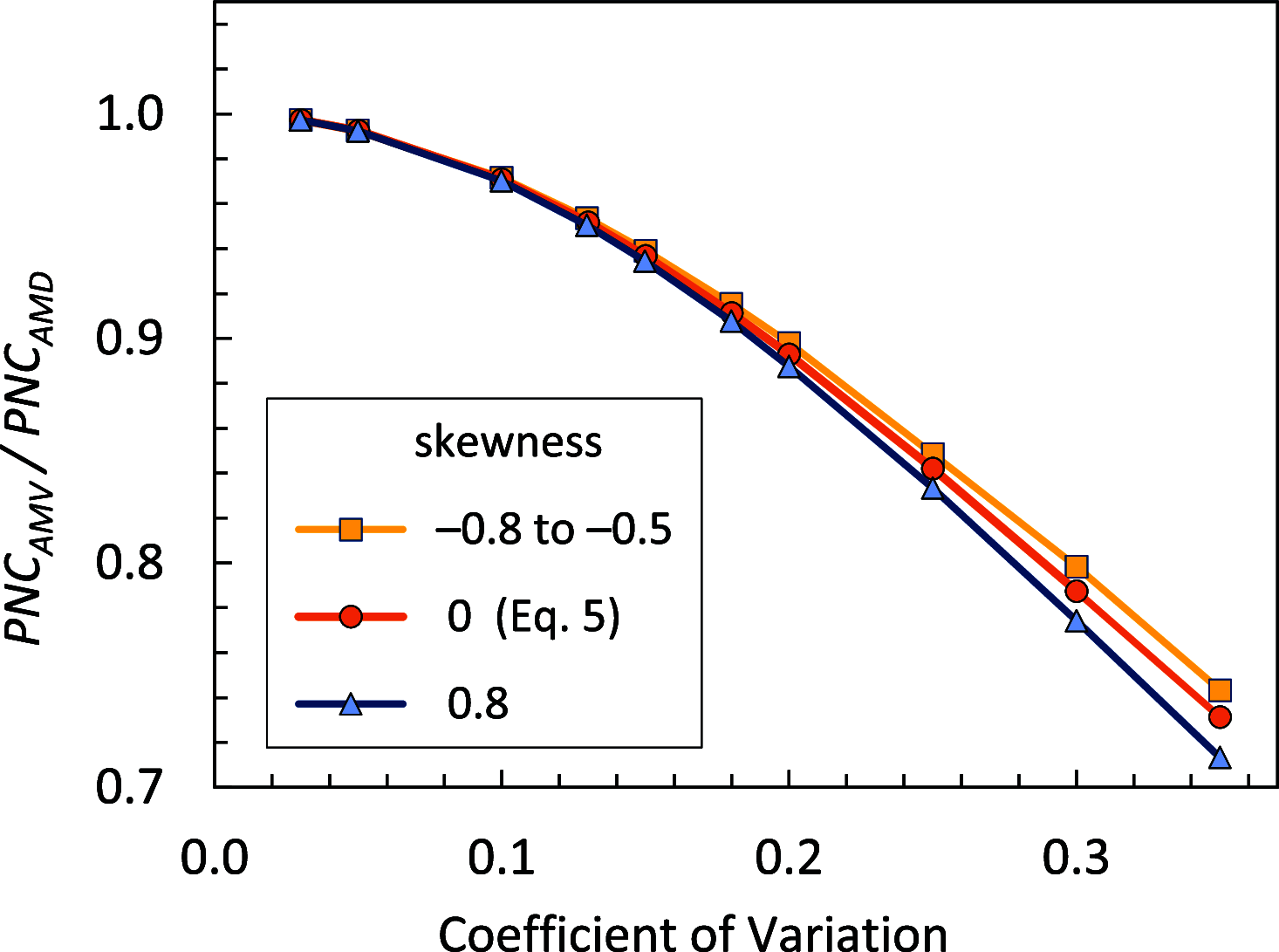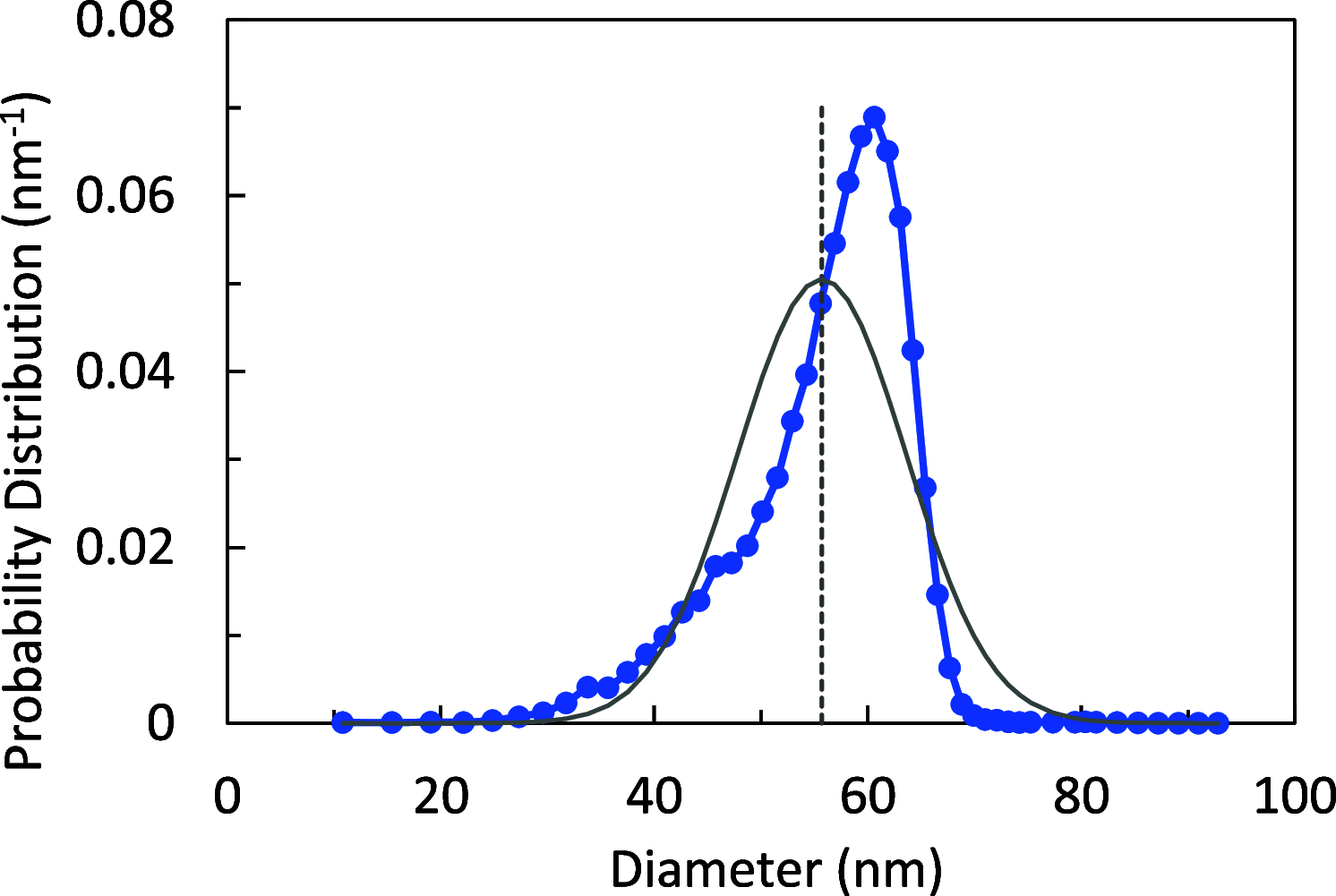Derivation of Particle Number Concentration from the Size Distribution: Theory and Applications
- PMID: 40378074
- PMCID: PMC12138877
- DOI: 10.1021/acs.analchem.4c05990
Derivation of Particle Number Concentration from the Size Distribution: Theory and Applications
Abstract
The particle number concentration (PNC) in a suspension is a key measurand in nanotechnology. A common approach for deriving PNC is to divide the total mass concentration by the per-particle mass, calculated as density times volume. The volume is most frequently derived from the arithmetic mean diameter (AMD) of the size distribution. The harmonic mean volume (HMV) has also been used. Given a known size distribution, we show that the correct PNC is obtained by using the arithmetic mean volume (AMV). The AMD-based volume results in an overestimate in PNC that increases superlinearly with increasing coefficient of variation (CV), reaching 12% at CV = 0.2 for a normal distribution. HMV would yield a much greater overestimate, exceeding 50%. The error in the AMD-derived PNC shows only weak skew dependence, suggesting a simple approximate correction as a function of CV in the common situation where AMD and CV are known but the overall size distribution is unknown. Using published data sets of gold nanoparticles, we demonstrate an overall consistency of ±1.1% in comparing the PNC directly determined by single-particle inductively coupled plasma-mass spectrometry (spICP-MS) and the PNCs derived from AMV using size distributions independently measured by high-resolution scanning electron microscopy and spICP-MS. We further compare AMV and AMD-derived PNCs for well-characterized polystyrene nanoparticle standards, illustrating sensitivity to distributional characteristics along with common errors to avoid. Nanoparticles in environmental samples, food additives, and nanomedicines often have CVs greater than 0.3, for which uncorrected AMD-derived PNC errors can exceed 35%.
Figures





Similar articles
-
Evaluation of the Potential of Single Particle ICP-MS for the Accurate Measurement of the Number Concentration of AuNPs of Different Sizes and Coatings.Anal Chem. 2022 Feb 22;94(7):3091-3102. doi: 10.1021/acs.analchem.1c04140. Epub 2022 Feb 10. Anal Chem. 2022. PMID: 35144383 Free PMC article.
-
Modeling, Validation, and Application of Instrument Response Function in the Form of Mixed Poisson Distribution for Single-Particle ICP-MS.Anal Chem. 2025 May 6;97(17):9353-9360. doi: 10.1021/acs.analchem.5c00089. Epub 2025 Apr 22. Anal Chem. 2025. PMID: 40261668
-
High transport efficiency of nanoparticles through a total-consumption sample introduction system and its beneficial application for particle size evaluation in single-particle ICP-MS.Anal Bioanal Chem. 2017 Feb;409(6):1531-1545. doi: 10.1007/s00216-016-0089-5. Epub 2016 Dec 2. Anal Bioanal Chem. 2017. PMID: 27913831
-
Folic acid supplementation and malaria susceptibility and severity among people taking antifolate antimalarial drugs in endemic areas.Cochrane Database Syst Rev. 2022 Feb 1;2(2022):CD014217. doi: 10.1002/14651858.CD014217. Cochrane Database Syst Rev. 2022. PMID: 36321557 Free PMC article.
-
Airborne particle number concentrations in China: A critical review.Environ Pollut. 2022 Aug 15;307:119470. doi: 10.1016/j.envpol.2022.119470. Epub 2022 May 14. Environ Pollut. 2022. PMID: 35580709 Review.
References
-
- Simon C. G., Borgos S. E., Calzolai L., Nelson B. C., Parot J., Petersen E. J., Roesslein M., Xu X., Caputo F.. Orthogonal and complementary measurements of properties of drug products containing nanomaterials. J. Controlled Release. 2023;354:120–127. doi: 10.1016/j.jconrel.2022.12.049. - DOI - PubMed
LinkOut - more resources
Full Text Sources

